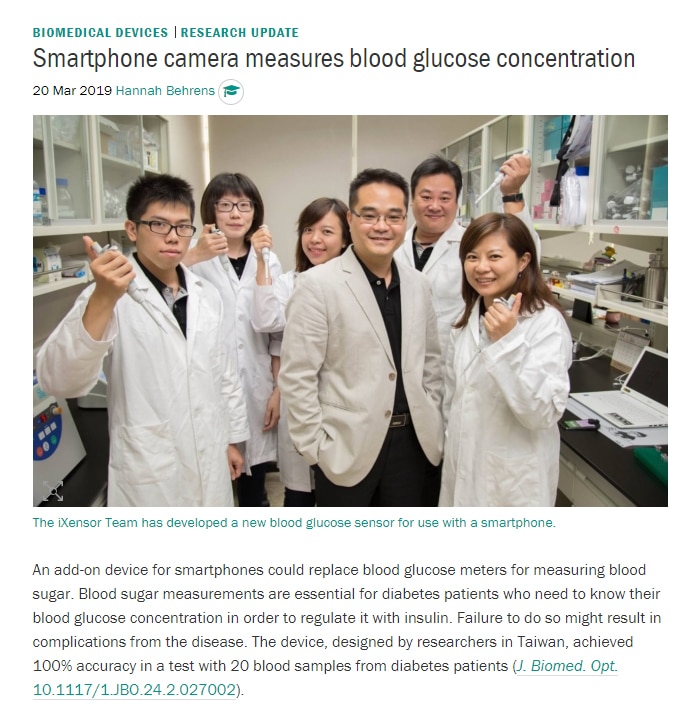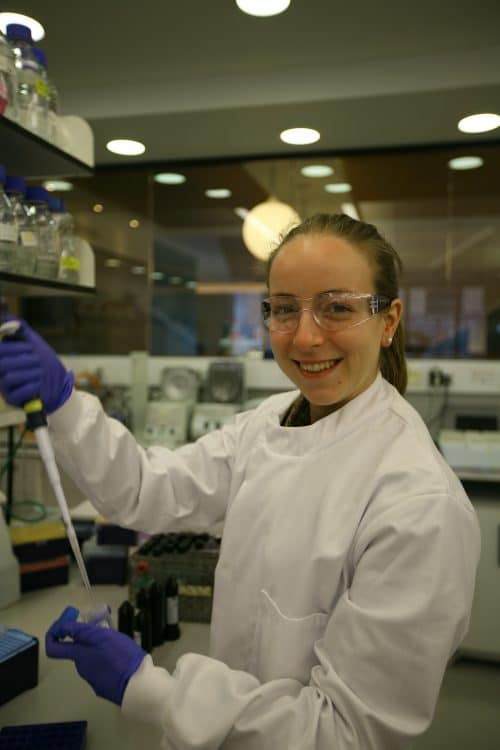Science writing: postgraduate Hannah Behrens shares her experiences and advice
27 Mar 2019

Hannah Behrens (2015, DPhil in Infection, Immunology and Translational Medicine) published an online news story (‘Smartphone camera measures blood glucose concentration’) for Physics World last week which has now been read over 78,800 times! The article discusses a new device for measuring blood glucose levels using a smartphone which could be a very welcome development for diabetes patients who need to monitor their blood sugar. We spoke to Hannah to find out more about her science writing.
You’ve been writing for Physics World for a while now – when did you start and how often do you contribute articles?
I started studying Biochemistry because I wanted to be a science journalist. When I did an internship at a science magazine, the editor recommended I either study journalism and specialise in science or study science and specialise in journalism. He told me: “If writing is for you, you will keep writing throughout your studies. If it’s not, you can still be a scientist.”
At first I wrote for student newspapers in Germany. After moving to Oxford I found that keeping up with the ever-changing student editors who were busy with their assignments and exams and would often not reply to emails was too tedious. So I was looking for more permanent and regular writing opportunities when an offer from IOP publishing reached me in June 2017. The publisher offered a one day training workshop and feedback on every article from their staff editor, and in return I would write one news article every month for their website Physics World for one year. The year was over last June but I still write for Physics World occasionally.
Is the diabetes article your most successful one to date in terms of readership?
This news story is definitely the most read one I’ve ever written. Most articles of this format get views in the range of the low thousands which is actually quite good too. The one you are referring to, about a device for measuring glucose using a smartphone, has now been read 78,800 times. It’s an easy to grasp, very applied piece of science with nice pictures; I am sure that helped in getting people’s attention.

What other platforms or publications are there that students and scientists can write for?
My friend Layal Liverpool (2015, DPhil in Infection, Immunology and Translational Medicine) writes for a similar platform, the Science Innovation Union blog, and she also won a British media fellowship which allowed her to write for the Guardian.
Other outlets I have written for include preLights, a preprint highlights service of The Company of Biologists; Wikipedia; and most recently Phenotype, a journal published by the Oxford Biochemistry Society. There is also The Conversation which is great for scientists to write about their own research. Personally, I have never written for them but I recently translated an article that my friends had written to make it accessible to more readers.
I have also written one-off pieces for a few blogs: the Museum of Natural History’s More than a Dodo, the Wellcome Trust’s Infection, Immunology and Translational Medicine blog, and St Edmund Hall’s MCR blog Ex Aula.
Last year I researched eradicable diseases and wrote up my findings as an entry for Our World in Data. Another entry on tetanus will be coming soon.
Do you have any advice for other postgraduate students who would like to start doing some scientific writing?
If you want to get into science writing, feel like telling the world about amazing science, or would like to up your public engagement and outreach game, there are plenty of opportunities. Just start and don’t be discouraged by rejections or people not getting back to you.
As far as I know Physics World is looking for new contributors with a background in Biophysics. Contact me if you would like to know more.
Categories
Related News

